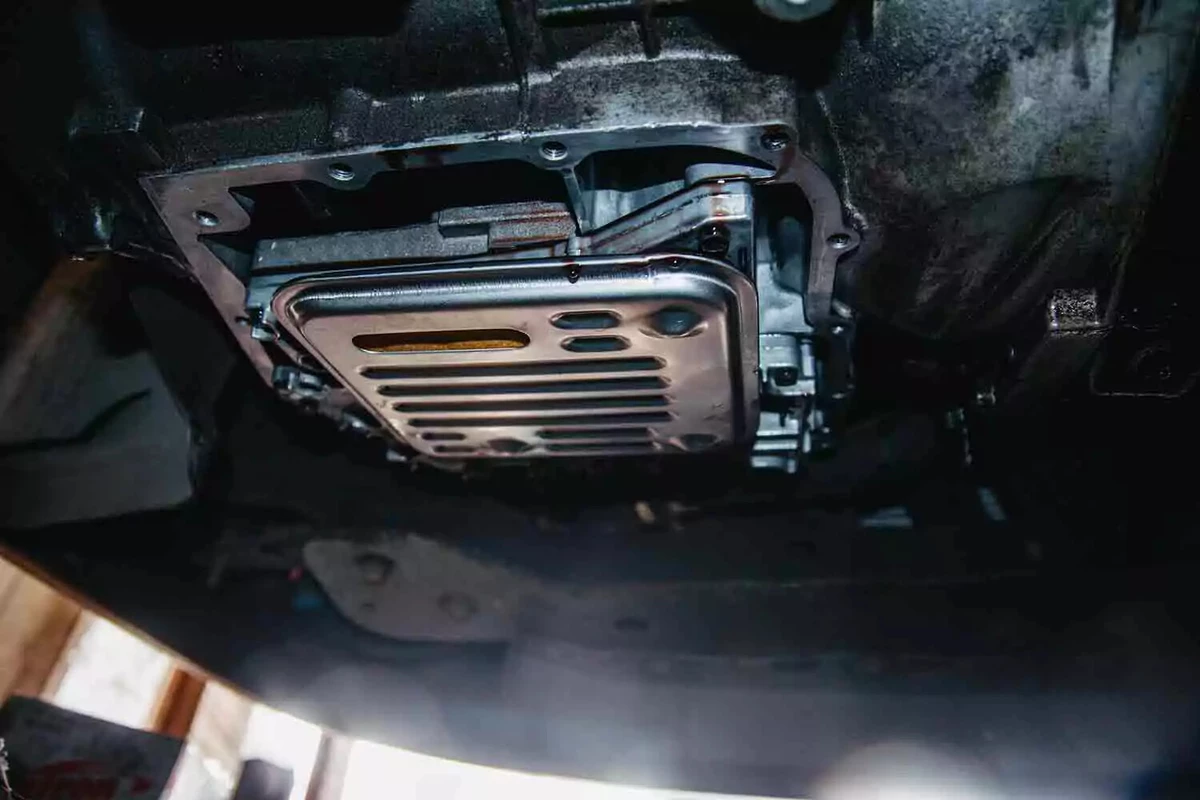Change your transmission fluid and filter on a regular schedule to prevent premature wear. This article provides a basic understanding of transmission fluids and filters. We also introduce you to the process of changing the fluid, signs that it’s time for maintenance, and average costs.
Manual and automatic transmissions use different types of fluid to lubricate the gears. Automatic transmissions also use fluid to create the hydraulic pressure needed to signal the transmission that it’s time to shift.
- Manual transmission fluid (MTF) is usually brown or amber.
- Automatic transmission fluid (ATF) is red and should smell slightly sweet. If the fluid is dark or smells burnt, it should be changed.
Many vehicles with manual transmissions use gear oil for transmission fluid. ATF is an entirely different fluid.
Your vehicle may have a continuously variable transmission (CVT). It’s common on hybrids and models from Nissan and Subaru. There is no standard color for CVT fluid, which is thicker than ATF. They are not interchangeable.
How often should you change the transmission fluid and filter?
Most manufacturers recommend replacing the transmission fluid between 30,000 and 60,000 miles. Check your owner’s manual to see your recommended service interval. Accelerate your schedule if you tow, haul heavy loads, or race your vehicle. Some vehicles have lifetime-fill transmission fluid. This is not considered serviceable by the owner.
Signs It’s Time to Change the Transmission Fluid and Filter

Draining automatic transmission fluid is a messy process. Use a right-sized drain pan.
The transmission fluid and filter are not meant to last forever. Thankfully, it’s not difficult to spot when the time is right to change the transmission filter and fluid.
If the fluid is contaminated, you may start to experience shifting problems because there’s less lubrication for the gears. Performance may decrease, shifting may become harder, and there could be slippage.
You should also take a look at the transmission fluid on the dipstick. If the fluid is clean, it should be pink or red, and translucent. If the fluid is darker red, black, or smells burnt, change it.
If your vehicle overheats, change your transmission fluid. Some vehicles have transmission fluid temperature gauges. If it goes over 230 degrees Fahrenheit, replace it immediately. If you don’t have a temp gauge for the transmission, your vehicle should have a warning light. If it turns on and you overheat, the fluid needs to be changed.
Even without overheating, transmission fluid breaks down over time, and it loses the ability to lubricate. Without the necessary lubrication and pressure, there’s an increase in heat, friction, and potential damage to internal components.
Just as you should typically change the oil filter when replacing the motor oil, we recommend changing the transmission filter when you change the fluid. The filter catches the debris before it gets into the transmission, so don’t leave a dirty filter in with clean fluid. Otherwise, the effectiveness of the fresh fluid is diminished.
Can you check and change the transmission yourself?
It’s not difficult to check transmission fluid. Locate the dipstick and check it with the engine running at normal operating temperature. Some vehicles have a sealed transmission. These don't come with a dipstick. With this system, it’s difficult to check and change the fluid at home.
DIY Replacing Transmission Fluid and Filter

You’ll need to get under the vehicle to replace the transmission fluid and filter. The task calls for a sturdy set of jack stands.
See our in-depth guide on how to change the transmission fluid - opens in new window or tab.. It’s a beginner skill-level job that takes less than 30 minutes. You need to drain the fluid, just as you do with motor oil.
A transmission flush requires you to flush all of the old fluid out of the system, including the cooler lines and torque converter. To do so, you need a machine that pushes the old fluid out before adding fresh fluid. Some mechanics warn against doing a flush on older, high-mileage vehicles because it may stir up sediment and particles that could inadvertently cause issues. This is only dangerous on already-worn-out transmissions—all the more reason to regularly change your transmission fluid.
While the transmission fluid drain and fill doesn’t get all the old fluid out, it is the recommended practice in most situations. However, consult your repair manual for maintenance recommendations specific to your vehicle.

How much does it cost to replace transmission fluid?
Expect to spend between $10 and $20 per quart for high-quality transmission fluid. The price for the transmission filter and gasket depends on your vehicle. For example, you could spend $100 for a high-quality original equipment manufacturer (OEM) filter and gasket. Luxury OEM brands could cost $200 or more.
While you could spend less than $150 to do your own transmission fluid and filter change, most shops charge between $200 and $500 for the job.
Get a new transmission pan gasket when changing the fluid and filter. The gasket wears down over time and can lead to leaks that compromise the transmission. While the fluid is drained and the pan is off to change the filter, we recommend replacing the gasket.
You only need basic tools to replace the transmission filter and fluid. To get the job done, invest in a high-quality floor jack, jack stands, drain pan, socket and ratchet, and filter wrench.
Share your feedback
This article is meant to provide general guidance only. Automotive maintenance, repair, upgrade, and installation may depend on vehicle-specifics such as make and model. Always consult your owner's manual, repair guide for specific information for your particular vehicle and consider a licensed auto-care professional's help as well, particularly for advance repairs.
































